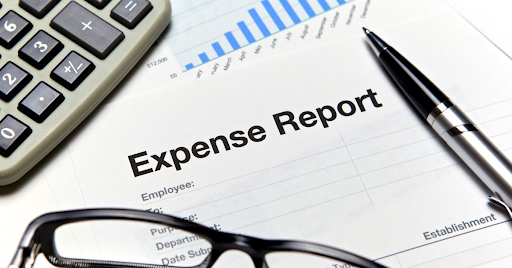4 Dos and Don’ts of Business Travel Expense Reports

When traveling for work, handling expense reports is a must-do part of the job. But it’s likely the last thing you feel like doing when you just got back from a business trip.
We get it, and we completely agree. Unfortunately, those expense reports won’t write themselves, and they need to get done while everything is still fresh in your mind. Otherwise, you could make little mistakes that turn into costly errors.
Before you start, get some rest, so you’re bright-eyed, bushy-tailed, and alert enough to tackle all your receipts. Then, follow these four dos and don’ts for business travel expense report documenting, and knock this vital task off your list.
1. Do Review the Company Travel Policies
Rather than spending money and time organizing things you might not get reimbursed for, check the travel policies first.
Optimally, this should be done before you head out. That way, you know what’s covered in your per diem, from lodging to the kinds of restaurants the Meals & Incidentals plan includes. You’ll also know what you can get reimbursed for outside of a per diem.
Review the policies as a refresher when you get back so you’re sure to include everything that must go along with the report.
Did you get that receipt from the cab that you took from the airport? Did you Uber, and rideshares aren’t covered in your travel policy? Was the hotel an approved lodging vendor?
Better to know ahead where your money is going and how much you’re likely to get back. As you’re logging these expenses, use the travel policy to ensure you complete the reports correctly.
2. Don’t Forget to Keep Track of the Little Things
The saying “the devil is in the details” might very well have been written for expense reporting. You never know which tiny bit of information you’ll be asked for by your manager or in an audit.
Keep receipts for everything you buy on your business trip, from the initial planning expenses until you get home. For online purchases, print the receipts and file them with the rest of the trip paperwork.
On the back of each document, include what the expense was for, which client (if any) was involved, and other details. You’ll appreciate this information later when that receipt is under question, and you can’t remember what it was for.
To help with this, some companies use an expense tracking mobile app. Using this software, travelers log their expenses in real-time, including snapshots or scans of the receipts. You can input the details directly into the program as you file your expense report or request approval for a purchase you aren’t sure is reimbursable.
Filing in real-time makes it easier to remember the little expenses and details. However, don’t toss those hard copies just yet. The IRS requires businesses to keep receipts for anywhere from two to seven years, depending on what it is.
3. Do Plan Your Expenses Ahead
Are you trying to save money and stick to your per diem? Plan ahead!
Last-minute travel is often the most expensive kind. Flights, hotels, car rentals, and other essential trip expenses rise within eight days of the trip. The further ahead you can book your itinerary, the more you can save.
However, the right booking platform will “watch” your trip for you. You enter the details, such as the date, number of travelers, and destination. The software gives you the current prices, as well as advice on whether you should book now or wait because the average costs should be going down soon.
If you want to hold off and see if you can get a cheaper fare, tell the program to watch the trip and notify you when the rates decrease. The earlier you book transportation and lodging, the easier it is to prepare for the rest of your trip.
4. Don’t Book Round Trip Transportation
What? Isn’t it easier for expense reporting to book both your outbound and inbound transportation at the same time? Well, yes, but it’s probably not cheaper.
If your goal is to get the best deal, consider searching for two one-way tickets. You might find that different providers have cheaper trips that way. For instance, if you’re flying, Airline A could have the best rates for your outbound flight. But Airline B may have a sale on the day you’re heading back, and you could save hundreds of dollars (or get a cheap upgrade).
Another benefit of the single-way fares is that if you must cancel or reschedule part of the trip, you don’t have to transfer the entire schedule. Change fees can add up, particularly if you have multiple stops along the way, and the expense reports that come along with these adjustments are a logistical headache.
Conclusion
Planning your next business trip but dreading the expense reports that come with it? These four dos and don’ts can take away the stress of those reports and give you a little extra free time in your schedule.


